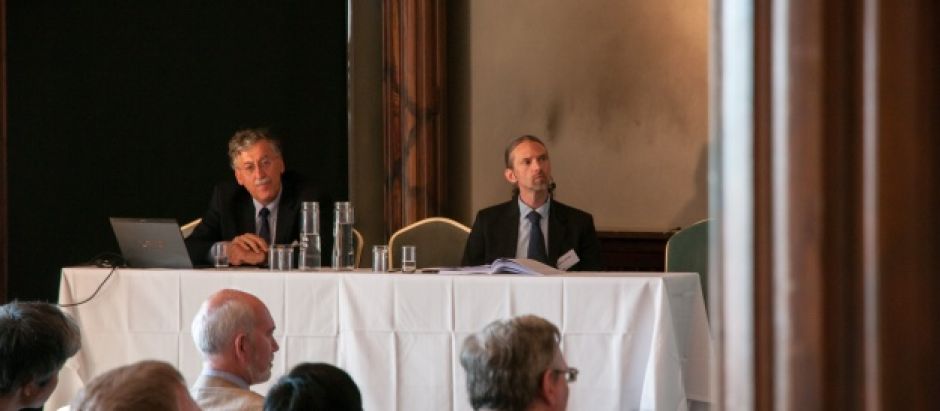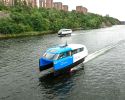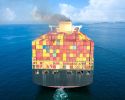Sweden hosted the 15th International Ship Stability Workshop

Great summer days welcomed 88 participants from 19 different countries to the 15th edition of the International Ship Stability Workshop that this year was held in Stockholm. The three day long workshop was divided into eight different sessions and a total of 34 papers were discussed.
Kostas Spyrou, chairman of the STAB International Standing Committee greeted and wished everyone a fruitful workshop. Anders Hermansson, senior advisor of the Swedish government on maritime strategies said that when it comes to complex issues such as ship stability, international collaboration is of particular importance and that ship stability and safety is of utmost importance for the Swedish maritime sector.
The eight different sessions were the following.
· Second generation intact stability criteria - how to ensure that an intact, functioning ship is stable. Ongoing work within the International Maritime Organization, IMO.
· Validation of numerical methods - how to ensure that numerical, mathematical models match reality.
· Novel approaches to ship stability - a challenge is to take advantage of the ever increasing computing capacity, to develop advanced simulation models and use these in the analysis, design and even the operation of ships.
· Computational and stochastic methods - the waves are typical stochastic and how do you model that kind of irregularity. And how do we analyse a ship's response as a stochastic process.
· Damage stability of passenger ships - how does one ensure that ships are robust after a damage occurred.
· Roll Damping - how to damp a ship's rolling motion. Important for both the safety of the ship as for comfort on board.
· Operational aspects of ship stability - how do you give the crew the best conditions possible to operate the ship in a safe and efficient manner.
· Stability of naval vessels - for example, extreme hull shapes and high speeds involve completely different aspects of ship stability.
Each session consisted of short presentations of the papers and then followed by vivid discussions on the papers content.
The workshop was arranged and hosted jointly by Martin Schreuder at Chalmers University of Technology and Anders Rosén at the KTH Royal Institute of Technology with Lighthouse as co-organisers.

-It has been a very successful stability workshop, we have covered all the essential topics of stability. We have considered the more basic aspects, more scientific, more theoretical works. We had also works that are more practical and orientated towards the design of the ships. All in all we are happy, we also had a very good attendance and I think the workshop is above standard, considering past experiences, says Kostas Spyrou, chairman of the STAB International Standing Committee and Professor of Dynamic Stability and Safety at National Technical University of Athens.
What impact do you think a workshop like this can have?
- We can improve knowledge within stability and we can also bring this new knowledge closer to the industry. We have two tasks, one is to improve the state of art, in terms of scientific contributions, and the other major task is to make this work relevant and useful for the industry to get better and safer ships, Kostas Spyrou says.
More information and the workshop papers can be found here: http://www.shipstab.org/
Related content:
Focus on dialogue when world's leading researchers in ship stability gathers in Stockholm
-
 Från motorbåt till militärfartyg – traineeprogrammet gav Isak nycklarna till sjöfartsbranschen
Från motorbåt till militärfartyg – traineeprogrammet gav Isak nycklarna till sjöfartsbranschen -
 DNV: Metanol är ett moget alternativt bränsle
DNV: Metanol är ett moget alternativt bränsle -
 Se Hållbar sjöfarts uppsamlingsheat
Se Hållbar sjöfarts uppsamlingsheat -
 NextWave – en podd som ska locka unga
NextWave – en podd som ska locka unga -
 Ny studie: Eldrivna pendelbåtar kan effektivisera Stockholms kollektivtrafik
Ny studie: Eldrivna pendelbåtar kan effektivisera Stockholms kollektivtrafik -
 Sjöfartens utsläpp ökar
Sjöfartens utsläpp ökar -
 Sociala relationer påverkar val av bränsle
Sociala relationer påverkar val av bränsle -
 Sjöfartens omställning kräver ”mjukare” påtryckningar
Sjöfartens omställning kräver ”mjukare” påtryckningar -
 Hon hade avtalad tid med Kapten ynkrygg
Hon hade avtalad tid med Kapten ynkrygg -
 Lighthouse omvärldsanalys 2025 – osäkerhet och tullar präglar sjöfarten
Lighthouse omvärldsanalys 2025 – osäkerhet och tullar präglar sjöfarten

